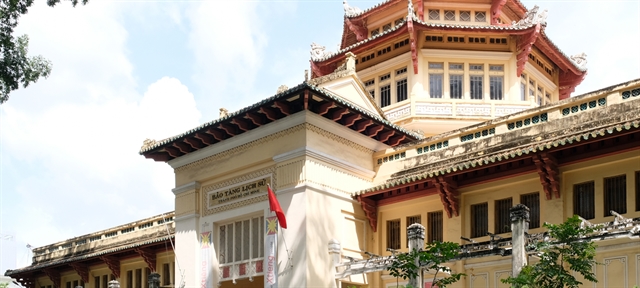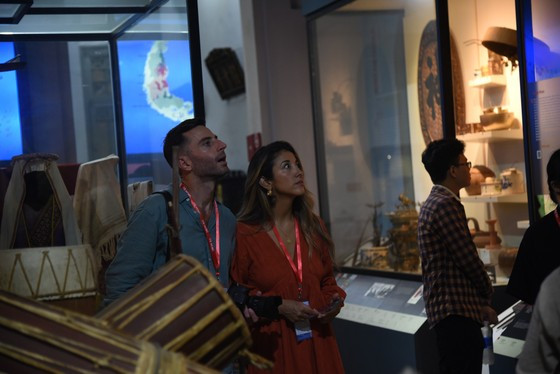 |
| ANCIENT CULTURE: The HCM City Museum of Vietnamese History has opened online exhibitions of ancient artefacts, paintings and sculptures on Vietnamese history and culture. Photo courtesy of the museum. |
The museum is still open while the restoration works are being carried out.
The investment, VNĐ45 billion (US$1.93 million), came from the city’s budget.
According to the museum’s deputy director, Nguyễn Khắc Xuân Thi, restoration works are expected to be completed in 2025. This will include restoring the museum’s facade, as well as upgrades to its building facilities. Main galleries and showcase rooms will also be upgraded.
The museum was built by the French colonialists in 1929. It is located on 3,000 square metres and displays more than 40,000 artefacts. It organises cultural activities and art shows on Vietnamese history and culture.
The displays consist of two main parts. The first exhibits artefacts of Vietnamese history dating from the prehistoric era to the end of the Nguyễn Dynasty (1802-1945), the country's last royal family; and the history of southern Việt Nam and other Asian countries.
The museum’s highlighted exhibit topics include the Đông Sơn culture of northern Việt Nam and Sa Huỳnh culture of central Việt Nam, dated between 2879 and 179 BC.
The Óc Eo culture of the Cửu Long (Mekong) River Delta region is also featured.
 |
| UPGRADING: The restoration of the Hồ Chí Minh Museum of History, one of the city’s seven biggest museums, has begun. This will include restoring facade, as well as upgrades to its building facilities. Photo courtesy of the museum. |
In February, a collection of 180 antiques, dating back to the 19th and 20th centuries reflecting Việt Nam’s history and culture, mostly from the Nguyễn Dynasty (1802-1945), were displayed and attracted viewers.
Pháp lam items such as tea sets, vases, and food trays decorated with patterns of flowers and tố nữ (Fair Maidens), were highlighted.
Pháp lam is a technique of enameling ceramics on a metal base (gold, silver, copper) introduced to Việt Nam in the early 19th century.
The products of pháp lam are considered a combination of the ceramic industry with jewellery. They were used only by the Nguyễn royalty.
 |
| LEARNING ABOUT VIỆT NAM - Foreigners visit the HCM City Museum of History. Photo courtesy of the museum. |
Online exhibitions
The museum is using smart technology to offer online displays as part of its effort to develop business.
It has launched several online exhibitions with 3D technology, smart apps and websites with the aim of expanding the museum’s activities and showcases to the public.
The apps also provide information about well-known historical figures, historical background and video clips, giving visitors a better understanding of the works.
“With digital technology, I can see connections between objects and contexts, and visualise and learn about historical periods and culture through space and time,” said Trần Trung Dũng, a first student from the HCM City University of Culture.
"Our staff are working to build the museum as an interactive museum by using modern technology applications to convey the most effective content and information,” said Thi.
The rich culture of the ancient kingdom of Phù Nam, which was first discovered in 1944 via artefacts found at sites near Ba Thê Mountain, now Óc Eo Town in Thoại Sơn District in An Giang Province, is displayed online.
Artefacts of Óc Eo Culture are valued as significant historical documents and evidence of a prosperous culture.
Many ancient artefacts and objects from China, Japan, India and Việt Nam were made in the late 18th and 19th centuries from stone, gem, ivory and ceramics.
To view the museum’s collections, visit the website www.baotanglichsutphcm.com.vn.— VNS